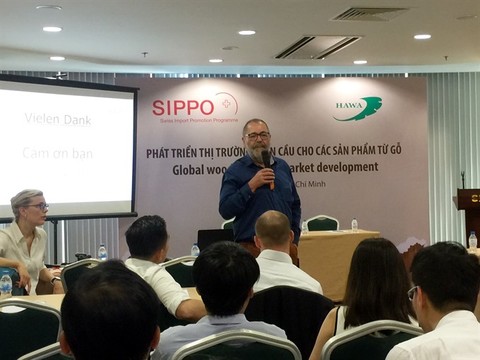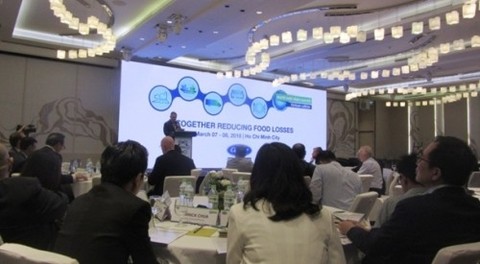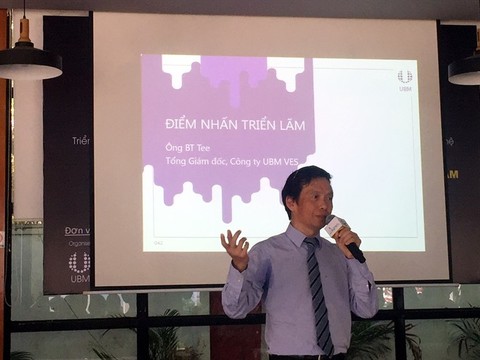Great expectations for Vietnam’s pharma firms
Great expectations for Vietnam’s pharma firms
Recording excellent performances in 2017, Vietnam’s pharmaceutical giants have set high profit expectations for 2018 despite stiffening competition in the market.
Traphaco (TRA), the second-largest publicly-traded drug maker in Vietnam, aims to make a net consolidated profit of VND300 billion ($13.64 million), and consolidated revenues of VND2.4 trillion ($109.09 million) this year, up 15.28 per cent and 28.47 per cent on-year, respectively.
TRA, which has Vietnam Azalea Fund Ltd. as a major foreign shareholder with a 24.99 per cent stake, also aims to increase its market capitalisation to VND6 trillion ($272.73 million).
Last year, TRA obtained a consolidated after-tax profit of VND260.22 billion ($11.82 million), up 14.02 per cent on-year. In the fourth quarter of the year, its consolidated net profit even rose 42 per cent on-year to VND81.64 billion ($3.7 million).
“We will focus on a new product – an eyedrop made at a new factory inaugurated in November 2017 – while upgrading some of our production assemblies to EU-GMP/PIC/S-GMP standards in 2018,” Vu Thi Thuan, chairwoman of the Board of Directors of TRA, told VIR.
2017 also marked a successful year for Hau Giang Pharmaceutical JSC (DHG), Vietnam’s third-largest domestic drug maker Domesco (DMC), and Imexpharm (IMP), enabling them to plan higher business goals for 2018.
IMP expects on-year growth of 18-20 per cent in revenue and 16-18 per cent in profit this year, buoyed by the operation of its new plant in the southern province of Binh Duong.
“We plan to complete a portfolio of EU-GMP-standardised products to increase the contribution of ethical drugs (ETC) to total revenue, while expanding our over-the-counter (OTC) channel and finding partners to boost exports,” said a senior IMP official.
Last year, IMP’s total net revenue rose 15.4 per cent on-year to VND1.165 trillion ($52.95 million), while its total net profit ascended 16 per cent on-year to VND117.4 billion ($5.33 million). In addition, the company saw growth of 15.8 per cent on-year in ETC contribution and an on-year rise of 11.8 per cent in OTC.
At present, IMP has three foreign shareholders: Balestrand Limited (6.09 per cent), Franklin Templeton Investment Funds - Templeton Frontier Markets Fund (8.49 per cent), and Kwe Beteiligungen AG (8.23 per cent).
Last year, DMC saw its total net revenue climb 4 per cent on-year to VND1.339 trillion ($60.86 million), while its total net profit reached VND207.66 billion ($9.44 million), up 23.26 per cent on-year.
DMC, whose 51.7 per cent stake is owned by Abbott Laboratories, aims to obtain strong business results this year and contribute to improving the living conditions of employees.
Despite not having the outstanding 2017 business performance of TRA, IMP and DMC, Vietnam’s biggest pharma firm, DHG, aims to make a net profit of VND768 billion ($34.9 million) in 2018, up 19.53 per cent on-year.
“To achieve these targets, DHG will continue to invest in the development of new products to gain competitiveness, while co-operating with research centres globally to have cutting-edge products,” said Doan Dinh Duy Khuong, acting CEO of DHG.
In 2017, DHG fetched net revenues of VND4.06 trillion ($184.54 million), up 7.4 per cent on-year, but its profit dropped 6.7 per cent to VND642.52 billion ($29.2 million).
One of the significant events of 2017 was the development of an additional three drugstore chains: Pharmacity, Phano and Medicare.
DHG currently has Taisho Pharmaceutical Holdings (24.5 per cent) and FTIF Templeton Frontier Markets Fund (12.95 per cent) as major foreign shareholders.
Vietnam’s pharmaceutical market is growing positively, with revenues in 2017 estimated at $5.2 billion, up 10 per cent on-year. The market is forecast to continue to gain two-digit growth in the next five years, according to statistics from Business Monitor International.
Industry insiders have projected that competition in the market will increase further as a number of distribution companies enter the retail drug segment, while international pharma firms are increasingly interested in the distribution networks of leading domestic pharma firms to cash in on market demands.





















